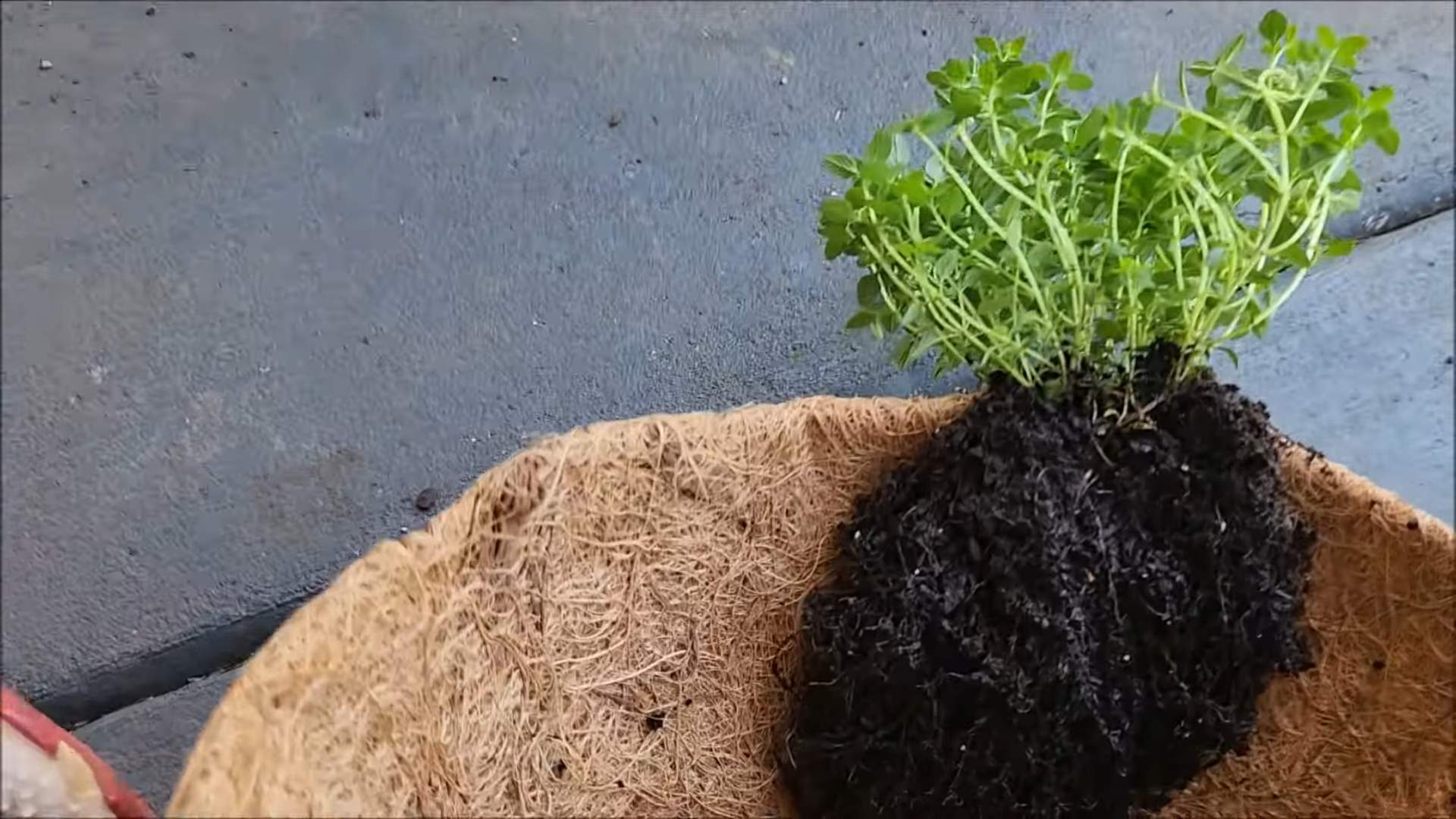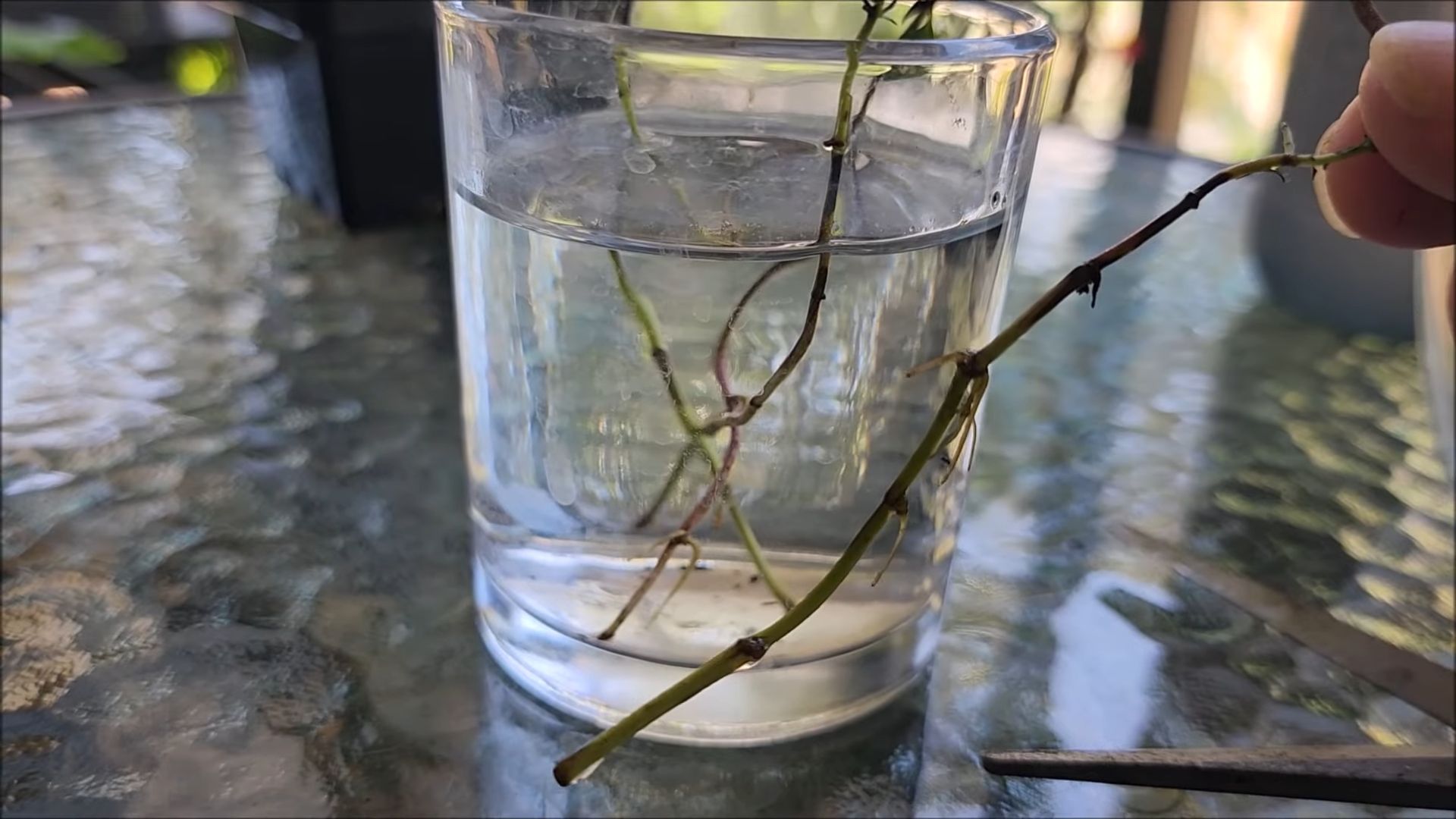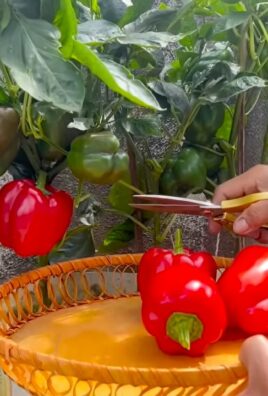Grow Kale at Home – and unlock a world of fresh, nutritious greens right outside your door! Have you ever dreamed of snipping vibrant, leafy kale straight from your garden for your morning smoothie or a delicious salad? It’s easier than you think, and this DIY guide is your key to making that dream a reality. For centuries, kale has been a staple in diets around the globe, prized for its hardiness and incredible health benefits. From the hearty stews of Scotland to the vibrant salads of the Mediterranean, kale has nourished generations.
But why should you bother growing your own? Well, store-bought kale can sometimes be expensive and, let’s be honest, a little lackluster. Plus, there’s nothing quite like the satisfaction of nurturing a plant from seed to harvest. This DIY guide will provide you with simple, effective tricks and hacks to grow kale at home, even if you have limited space or a less-than-green thumb. I’m going to show you how to select the right varieties, prepare your soil, and protect your precious kale from pests, ensuring a bountiful harvest you can enjoy all season long. So, grab your gardening gloves, and let’s get started!

Growing Kale at Home: A Beginner’s Guide to Leafy Greens
Hey there, fellow gardening enthusiasts! I’m so excited to share my experience with growing kale at home. It’s surprisingly easy, incredibly rewarding, and gives you access to fresh, nutritious greens right in your backyard (or even on your balcony!). Kale is a superfood powerhouse, packed with vitamins and minerals, and it’s incredibly versatile in the kitchen. So, let’s dive in and get our hands dirty!
Choosing Your Kale Variety
Before we get started, let’s talk about kale varieties. There are tons to choose from, each with its own unique flavor and texture. Here are a few of my favorites:
* **Curly Kale:** This is the classic kale you probably see most often in the grocery store. It has tightly curled leaves and a slightly bitter taste.
* **Lacinato Kale (Dinosaur Kale):** Also known as Tuscan kale or cavolo nero, this variety has long, dark green, almost black leaves with a slightly sweeter, more delicate flavor than curly kale. It’s my personal favorite for salads and soups.
* **Red Russian Kale:** This variety has flat, fringed leaves with purple stems and a mild, slightly sweet flavor. It’s beautiful in the garden and delicious in salads.
* **Redbor Kale:** This is an ornamental kale with deeply ruffled, purple-red leaves. It’s stunning in the garden and adds a pop of color to your meals.
The best variety for you will depend on your personal preferences and growing conditions. I recommend trying a few different types to see which ones you like best!
Starting from Seed vs. Buying Transplants
You have two main options for starting your kale: from seed or from transplants.
* **Starting from Seed:** This is the more economical option, and it gives you more control over the growing process. You can start seeds indoors 6-8 weeks before the last expected frost, or direct sow them in the garden after the danger of frost has passed.
* **Buying Transplants:** This is the easier option, especially if you’re a beginner. You can find kale transplants at most garden centers in the spring and fall.
I’ve done both, and honestly, both work great. If you’re impatient like me, transplants are the way to go. But if you enjoy the process of nurturing seedlings, starting from seed is a fun and rewarding experience.
Preparing Your Garden Bed
Kale thrives in well-drained soil that is rich in organic matter. Here’s how to prepare your garden bed:
1. **Choose a Sunny Location:** Kale needs at least 6 hours of sunlight per day.
2. **Test Your Soil:** A soil test will tell you the pH and nutrient levels of your soil. Kale prefers a soil pH between 6.0 and 7.5.
3. **Amend Your Soil:** If your soil is heavy clay or sandy, amend it with compost or other organic matter to improve drainage and fertility. I usually add a generous layer of compost and some aged manure.
4. **Till or Dig the Soil:** Loosen the soil to a depth of at least 12 inches. This will allow the kale roots to grow easily.
5. **Remove Rocks and Debris:** Clear the area of any rocks, weeds, or other debris.
6. **Rake the Soil Smooth:** Rake the soil smooth to create a level planting surface.
Planting Your Kale
Now for the fun part – planting!
Planting Seeds Indoors (Optional)
If you’re starting from seed indoors:
1. **Fill Seed Trays or Pots:** Fill seed trays or small pots with a seed-starting mix.
2. **Sow the Seeds:** Sow the seeds about 1/4 inch deep.
3. **Water Gently:** Water the seeds gently to moisten the soil.
4. **Provide Light:** Place the seed trays or pots under a grow light or in a sunny window.
5. **Keep the Soil Moist:** Keep the soil moist but not soggy.
6. **Harden Off Seedlings:** Once the seedlings have a few sets of true leaves, harden them off by gradually exposing them to outdoor conditions for a week before transplanting them into the garden.
Planting Transplants or Direct Sowing Seeds
Whether you’re using transplants or direct sowing seeds:
1. **Space Plants Properly:** Space kale plants 12-18 inches apart in rows that are 2-3 feet apart. This gives them plenty of room to grow.
2. **Dig Holes:** Dig holes that are slightly larger than the root ball of the transplants or the depth you need for the seeds.
3. **Plant Transplants:** Gently remove the transplants from their containers and place them in the holes. Make sure the top of the root ball is level with the soil surface.
4. **Sow Seeds:** If direct sowing, plant seeds about 1/2 inch deep.
5. **Fill Holes:** Fill the holes with soil and gently firm the soil around the plants.
6. **Water Thoroughly:** Water the plants thoroughly after planting.
Caring for Your Kale
Kale is relatively easy to care for, but here are a few tips to keep your plants healthy and productive:
1. **Water Regularly:** Kale needs consistent moisture, especially during hot, dry weather. Water deeply whenever the top inch of soil feels dry.
2. **Fertilize:** Fertilize kale every few weeks with a balanced fertilizer or compost tea. I like to use fish emulsion, which is a great organic option.
3. **Weed Regularly:** Keep the garden bed free of weeds, which can compete with kale for nutrients and water.
4. **Mulch:** Apply a layer of mulch around the plants to help retain moisture, suppress weeds, and regulate soil temperature. I use straw or shredded leaves.
5. **Pest Control:** Keep an eye out for pests such as aphids, cabbage worms, and flea beetles. You can control these pests with insecticidal soap, neem oil, or by handpicking them off the plants. I’ve found that covering my kale with row covers can prevent many pest problems.
6. **Protect from Frost:** Kale is cold-hardy, but it can be damaged by severe frost. If you live in an area with harsh winters, protect your kale with row covers or a cold frame.
Harvesting Your Kale
You can start harvesting kale leaves as soon as they are large enough to eat, usually about 6-8 weeks after planting.
1. **Harvest Outer Leaves:** Harvest the outer leaves first, leaving the inner leaves to continue growing.
2. **Cut or Snap Leaves:** You can cut or snap the leaves off the plant. I prefer to snap them off, as it seems to encourage new growth.
3. **Harvest Regularly:** Harvest kale regularly to encourage continued production.
4. **Wash and Store:** Wash the kale leaves thoroughly and store them in the refrigerator in a plastic bag or container. They will keep for several days.
Troubleshooting Common Kale Problems
Even with the best care, you might encounter a few problems while growing kale. Here are some common issues and how to address them:
* **Yellowing Leaves:** This can be caused by nutrient deficiencies, overwatering, or underwatering. Make sure your soil is well-drained and that you are fertilizing regularly.
* **Holes in Leaves:** This is usually caused by pests such as cabbage worms or flea beetles. Use insecticidal soap, neem oil, or row covers to control these pests.
* **Stunted Growth:** This can be caused by poor soil, lack of sunlight, or pests. Make sure your soil is fertile and well-drained, and that your kale is getting enough sunlight.
Enjoying Your Homegrown Kale
Now that you’ve harvested your kale, it’s time to enjoy it! Kale is incredibly versatile and can be used in a variety of dishes. Here are a few of my favorite ways to eat kale:
* **Salads:** Massage kale leaves with olive oil and lemon juice to soften them and make them more palatable for salads.
* **Smoothies:** Add kale to your smoothies for a boost of nutrients.
* **Soups:** Kale is a great addition to soups and stews.
* **Sautéed:** Sauté kale with garlic and olive oil for a simple and delicious side dish.
* **Kale Chips:** Bake kale leaves in the oven to make crispy and healthy kale chips.
My Favorite Kale Chip Recipe
Here’s a super simple kale chip recipe I swear by:
1. Preheat your oven to 350°F (175°C).
2. Wash and dry your kale leaves thoroughly. Remove the tough stems.
3. Tear the leaves into bite-sized pieces.
4. In a large bowl, toss the kale leaves with olive oil, salt, and any other seasonings you like (garlic powder, paprika, chili powder, etc.).
5. Spread the kale leaves in a single layer on a baking sheet.
6. Bake for 10-15 minutes

Conclusion
So, there you have it! Growing kale at home isn’t just a trendy gardening project; it’s a gateway to fresher, healthier meals and a deeper connection with the food you eat. We’ve walked you through the simple steps, from choosing the right kale variety to harvesting your bountiful crop. The beauty of this DIY project lies in its accessibility. Whether you have a sprawling backyard or a sunny windowsill, you can cultivate your own supply of this nutritional powerhouse.
Why is this a must-try? Because store-bought kale simply can’t compare to the vibrant flavor and crisp texture of homegrown. Plus, you have complete control over the growing process, ensuring your kale is free from harmful pesticides and herbicides. Imagine adding freshly picked kale to your morning smoothie, tossing it into a vibrant salad, or sautéing it with garlic for a quick and healthy side dish. The possibilities are endless!
But don’t stop there! Experiment with different kale varieties to discover your favorites. Try growing curly kale, dinosaur kale (lacinato), or red Russian kale for a variety of flavors and textures. You can also explore different growing methods, such as container gardening or raised beds, to find what works best for your space and lifestyle. Consider companion planting your kale with herbs like rosemary or thyme to deter pests and enhance flavor.
We encourage you to embrace the joy of growing kale at home. It’s a rewarding experience that will nourish your body and soul. Don’t be afraid to get your hands dirty and learn along the way. Even if you encounter a few challenges, the satisfaction of harvesting your own kale will make it all worthwhile.
And most importantly, we want to hear about your experiences! Share your tips, tricks, and triumphs in the comments below. Let us know what kale varieties you’re growing, what challenges you’ve faced, and what delicious recipes you’ve created with your homegrown harvest. Together, we can build a community of kale-loving gardeners and inspire others to embark on this rewarding journey. So, grab your seeds, get planting, and get ready to enjoy the delicious rewards of growing kale at home!
Frequently Asked Questions (FAQs)
Q: What is the best time of year to plant kale?
A: Kale is a cool-season crop, meaning it thrives in cooler temperatures. The best time to plant kale is in early spring or late summer/early fall. For a spring crop, start seeds indoors 6-8 weeks before the last expected frost. For a fall crop, sow seeds directly into the garden in late summer or early fall. This allows the plants to mature before the first hard frost. In warmer climates, you can grow kale throughout the winter.
Q: How much sunlight does kale need?
A: Kale needs at least 6 hours of sunlight per day to thrive. Choose a location in your garden that receives full sun. If you’re growing kale indoors, place it near a sunny window or use grow lights to supplement natural light. Insufficient sunlight can result in leggy, weak plants with poor flavor.
Q: What kind of soil is best for growing kale?
A: Kale prefers well-drained soil that is rich in organic matter. Amend your soil with compost or aged manure before planting to improve drainage and fertility. Kale also prefers a slightly acidic to neutral soil pH, between 6.0 and 7.0. You can test your soil pH with a soil testing kit and amend it accordingly.
Q: How often should I water kale?
A: Kale needs consistent moisture to thrive. Water deeply and regularly, especially during dry periods. Aim to keep the soil consistently moist but not waterlogged. Mulching around your kale plants can help retain moisture and suppress weeds. Check the soil moisture regularly by sticking your finger into the soil. If the top inch feels dry, it’s time to water.
Q: What are some common pests and diseases that affect kale?
A: Common pests that affect kale include aphids, cabbage worms, flea beetles, and slugs. You can control these pests with organic methods such as handpicking, insecticidal soap, or diatomaceous earth. Common diseases that affect kale include clubroot, downy mildew, and black rot. Prevent these diseases by practicing crop rotation, ensuring good air circulation, and avoiding overhead watering. Choose disease-resistant kale varieties whenever possible.
Q: How do I harvest kale?
A: You can begin harvesting kale leaves when they are about 4-6 inches long. Harvest the outer leaves first, leaving the inner leaves to continue growing. This allows the plant to continue producing new leaves throughout the growing season. You can harvest kale leaves continuously for several weeks or even months. Simply snap or cut the leaves off near the base of the plant.
Q: Can I grow kale in containers?
A: Yes, kale grows well in containers. Choose a container that is at least 12 inches deep and wide to allow the roots to develop properly. Use a well-draining potting mix and provide adequate sunlight and water. Container-grown kale may need to be fertilized more frequently than kale grown in the ground.
Q: How do I store kale after harvesting?
A: To store kale after harvesting, wash the leaves thoroughly and dry them completely. Wrap the leaves in a paper towel and store them in a plastic bag in the refrigerator. Kale can be stored in the refrigerator for up to a week. You can also freeze kale for longer storage. To freeze kale, blanch the leaves in boiling water for 2-3 minutes, then plunge them into ice water to stop the cooking process. Drain the leaves thoroughly and freeze them in freezer bags or containers.
Q: What are some ways to use homegrown kale?
A: The possibilities are endless! You can add kale to smoothies, salads, soups, stews, and stir-fries. You can also sauté kale with garlic and olive oil for a quick and healthy side dish. Kale chips are a popular and healthy snack. You can also use kale in quiches, frittatas, and other egg dishes. Get creative and experiment with different recipes to discover your favorite ways to enjoy homegrown kale.
Q: Is growing kale at home really worth the effort?
A: Absolutely! Growing kale at home offers numerous benefits. You’ll have access to fresher, more flavorful kale that is free from harmful pesticides and herbicides. You’ll also save money on groceries and reduce your environmental impact. Plus, gardening is a rewarding and therapeutic activity that can improve your physical and mental well-being. So, yes, growing kale at home is definitely worth the effort!




Leave a Comment